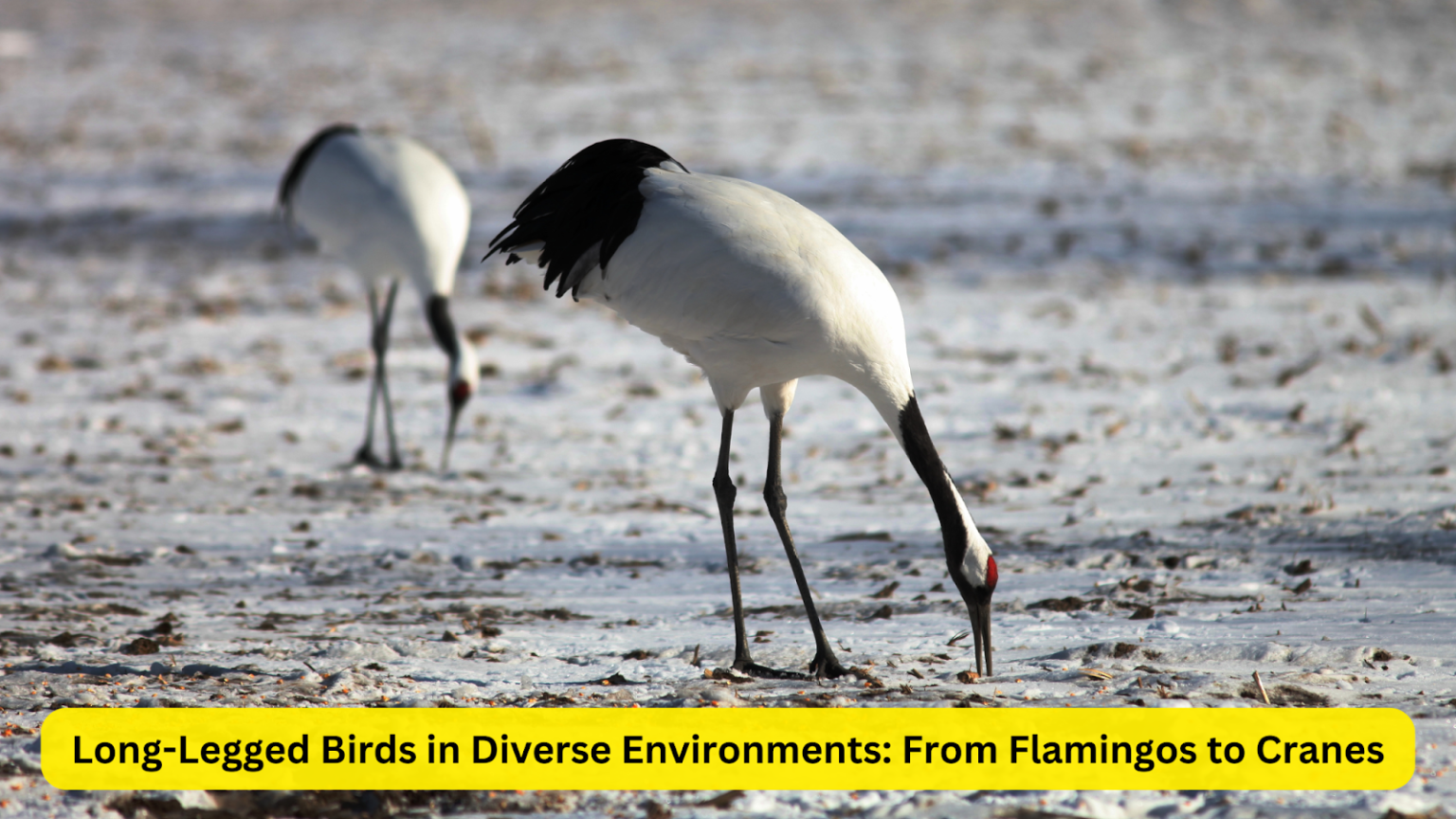Long-legged birds are a fascinating group of avian species that captivate bird enthusiasts and ecologists alike. Their distinctive long legs are not just for show; they are key adaptations that allow these birds to thrive in their respective environments. These birds are often found wading through wetlands, marshes, and coastal areas, showcasing their impressive hunting skills and unique behaviors. The diversity among these species is remarkable, each with its own set of characteristics that contribute to the rich tapestry of our natural world.
Reasons for Long Legs in Birds
- Wading Through Water: Long legs allow birds to wade through deep water while keeping their bodies dry.
- Efficient Hunting: Enables birds to stand still for long periods, waiting to catch fish and other prey without making waves.
- Predator Avoidance: Provides a height advantage to spot predators early and react quickly.
- Thermoregulation: Helps birds regulate body temperature by keeping cool in hot environments or avoiding heat loss in cold water.
- Specialized Feeding Techniques: Allows for unique feeding methods like stirring mud (flamingos) or sweeping bills side-to-side (storks).
- Navigating Terrain: Facilitates movement through challenging environments like swamps, tall grasses, and shallow coastal areas.
- Enhanced Visibility: Improves the ability to see over tall vegetation and communicate visually during courtship displays.
Notable Long-Legged Bird Species
1. Great Blue Heron
The Great Blue Heron is one of the most easily recognizable birds in North America. It stands tall with its long legs, long neck, and striking blue-gray plumage. This heron is known for its slow and deliberate movements as it stalks fish in shallow waters.
| Description | Details |
| Scientific Name | Ardea Herodias |
| Length | 97-137 cm (38-54 in) |
| Weight | 2.1-2.5 kg (4.6-5.5 lbs) |
| Region | North America |

2. Flamingo
Flamingos are known for their bright pink feathers and long, thin legs. They inhabit warm, watery regions and are famous for their one-legged stance and unique feeding behavior, filtering food from the water using their specialized beaks.
| Description | Details |
| Scientific Name | Phoenicopteridae |
| length | 110-150 cm (43-59 in) |
| weight | 2-4 kg (4.4-8.8 lbs) |
| Region | Africa, Asia, Americas |

3. Black-necked Stilt
The Black-necked Stilt is a slender bird with extremely long legs, which are useful for wading in shallow water. It is distinguished by its black-and-white plumage and red legs.
| Description | Details |
| Scientific Name | Himantopus mexicanus |
| Length | 33-36 cm (13-14 in) |
| Weight | 33-36 cm (13-14 in) |
| Region | Americas |

4. Great Egret
The Great Egret is a large, white heron with a yellow bill and long black legs. It is often seen standing motionless in shallow water waiting to spear fish or frogs with its sharp bill.
| Description | Details |
| Scientific Name | Ardea alba |
| Length | 80-100 cm (31-39 in) |
| Weight | 700-1,200 g (1.5-2.6 lbs) |
| Region | Worldwide, especially in warm climates |
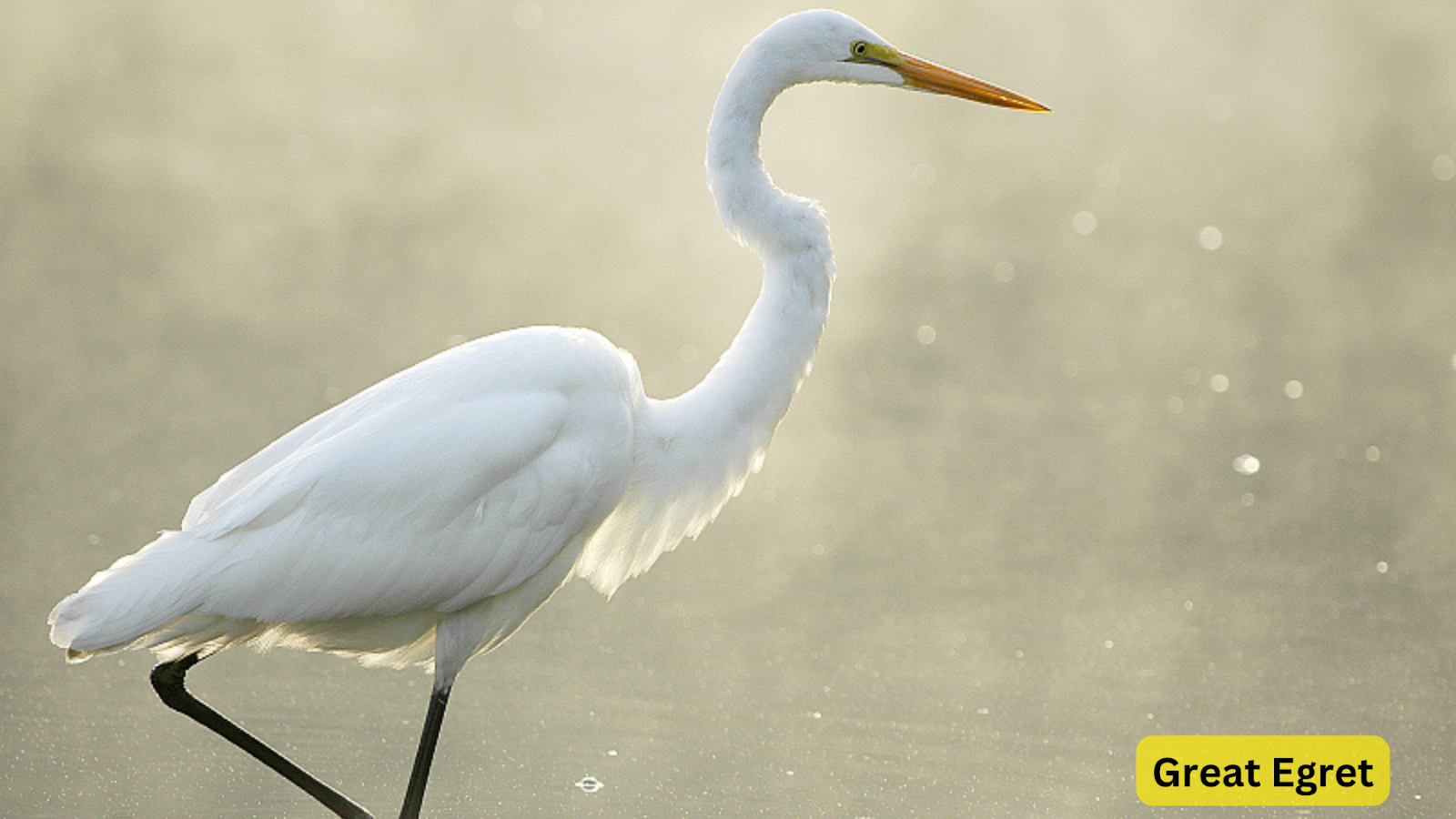
5. Marabou Stork
The Marabou Stork is a large wading bird in the stork family, noted for its massive size and its bald head and neck. It has a large throat pouch which it uses to store food.
| Description | Details |
| Scientific Name | Leptoptilos crumenifer |
| Length | 120-130 cm (47-51 in) |
| Weight | 4-8 kg (8.8-17.6 lbs) |
| Region | Sub-Saharan Africa |

6. Secretary Bird
The Secretary Bird is a large, mostly terrestrial bird of prey. It is easily recognizable by its long legs, crane-like appearance, and distinctive feathers on its head.
| Description | Details |
| Scientific Name | Sagittarius serpentarius |
| Length | 90-130 cm (35-51 in) |
| Weight | 2.3-4.5 kg (5-10 lbs) |
| Region | Sub-Saharan Africa |
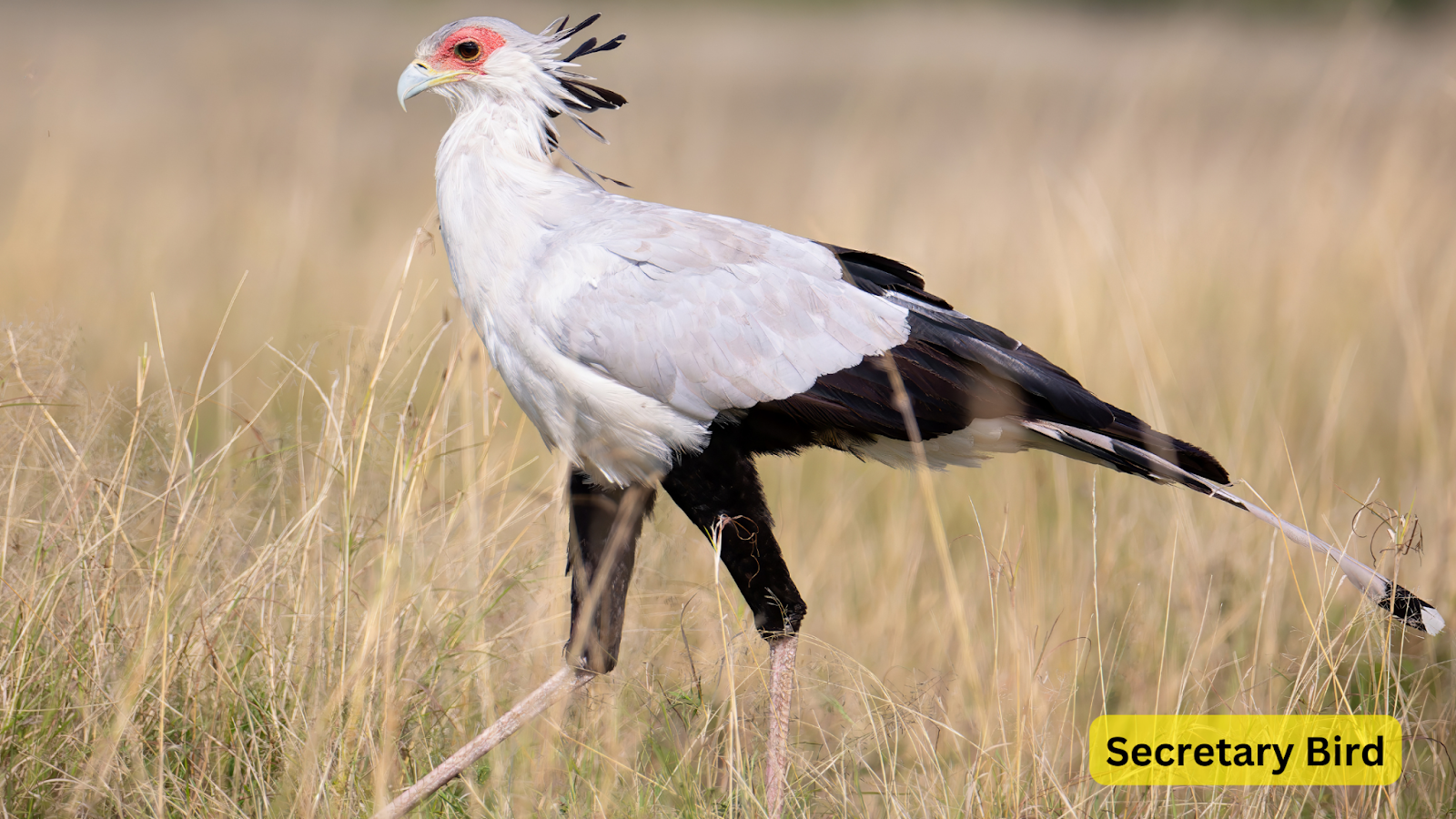
7. Jabiru
The Jabiru is a large stork found in the Americas, known for its white plumage, black head, and strikingly long neck. It is the tallest flying bird in South America.
| Description | Details |
| Scientific Name | jabiru Mycteria |
| Length | 120-140 cm (47-55 in) |
| Weight | 8-9 kg (17.6-19.8 lbs) |
| Region | Central and South America |
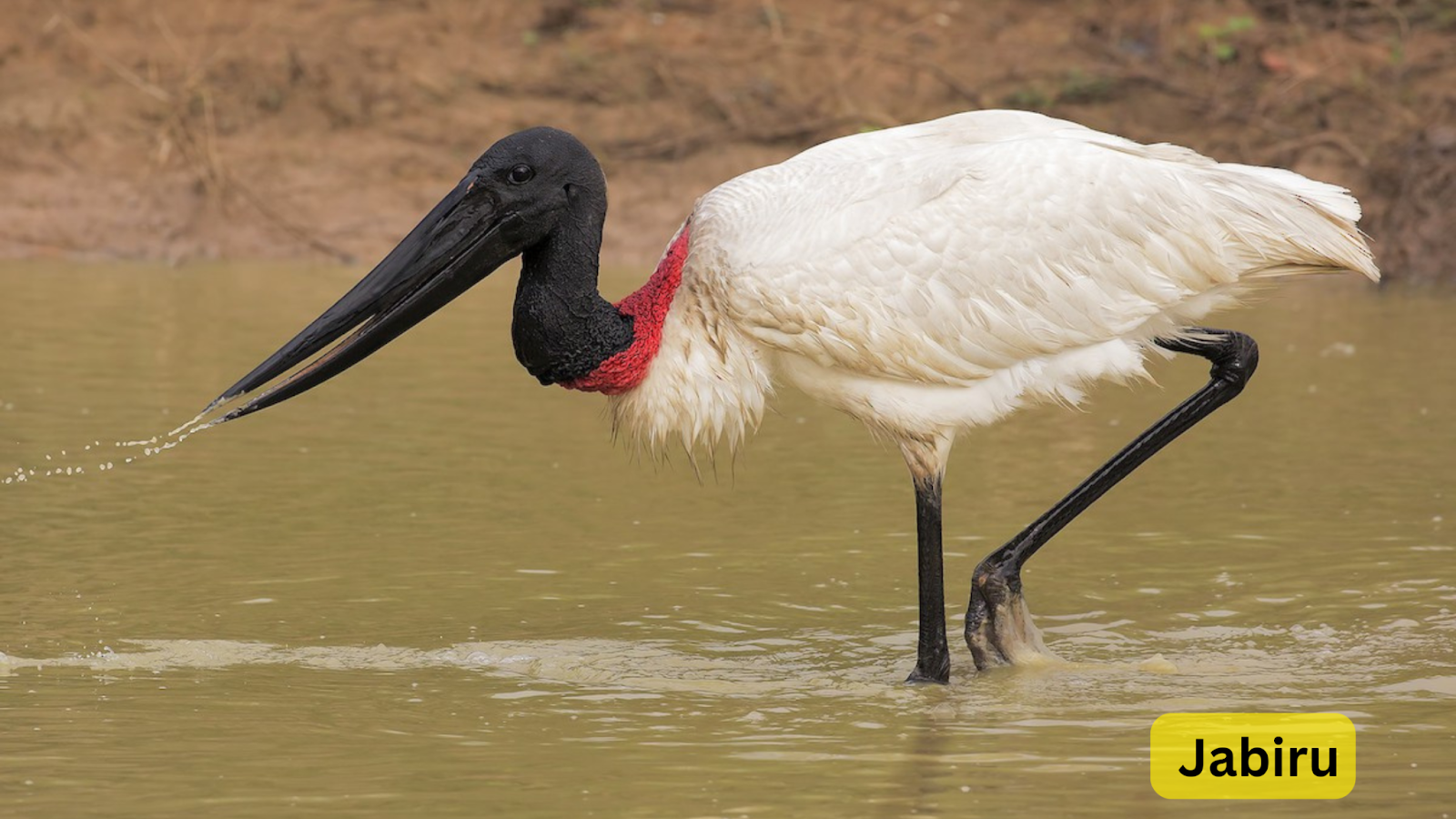
8. Shoebill
The Shoebill is a large bird known for its massive shoe-shaped bill. It has a prehistoric appearance and is typically found in swamps in tropical East Africa.
| Description | Details |
| Scientific Name | Balaeniceps rex |
| Length | 110-140 cm (43-55 in) |
| Weight | 4-7 kg (8.8-15.4 lbs) |
| Region | East Africa |

9. White Stork
The White Stork is a large bird with white plumage and black wing feathers. It is well-known for its migratory behavior and is often associated with folklore and myths.
| Description | Details |
| Scientific Name | Ciconia ciconia |
| Length | 100-115 cm (39-45 in) |
| Weight | 2.3-4.5 kg (5-10 lbs) |
| Region | Europe, North Africa, Asia |
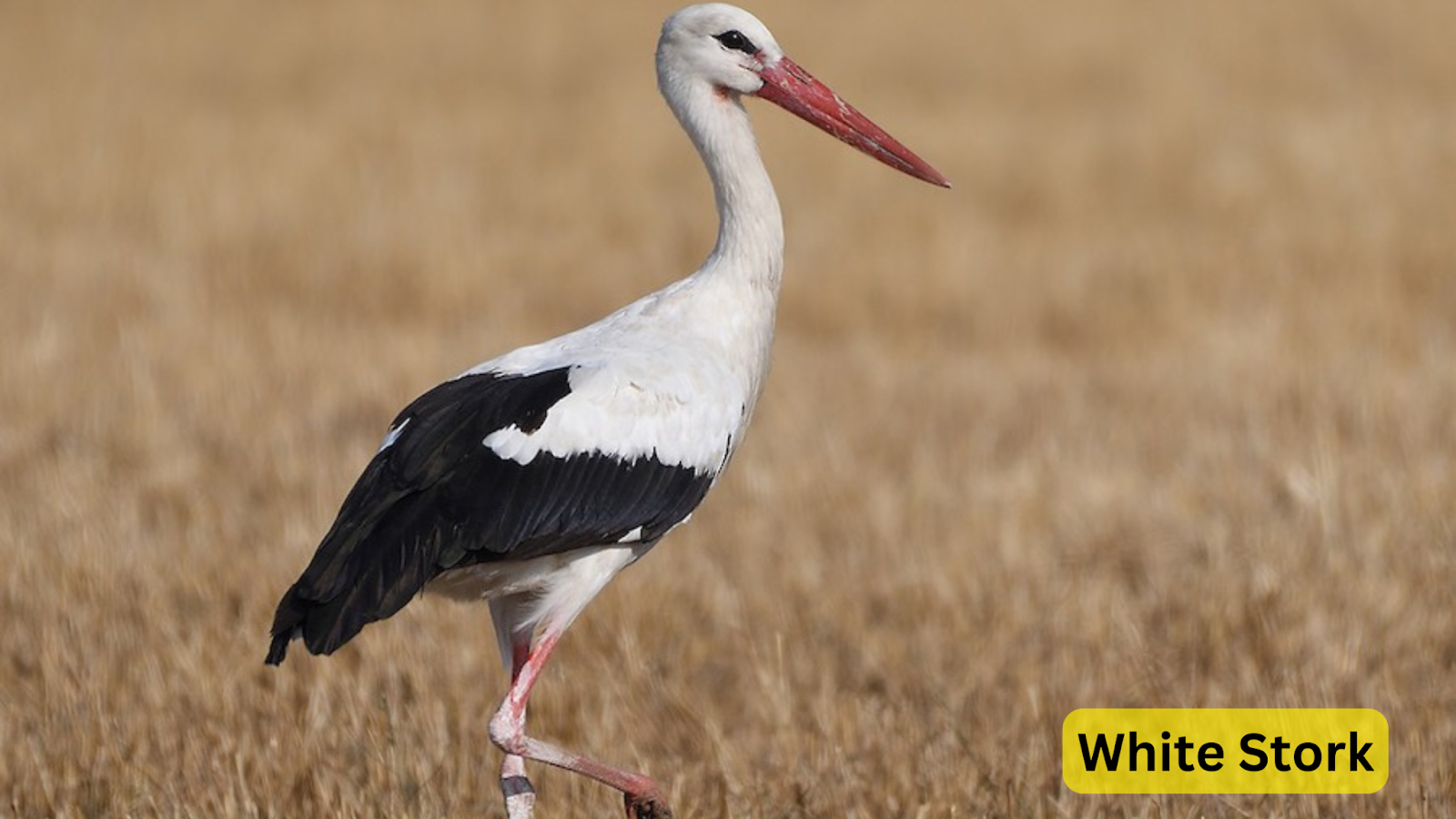
10. Roseate Spoonbill
The Roseate Spoonbill is a distinctive wading bird known for its pink plumage and spatulate bill, which it uses to sift through mud for food.
| Description | Details |
| Scientific Name | Platalea ajaja |
| Length | 71-86 cm (28-34 in) |
| Weight | 1.2-1.8 kg (2.6-4 lbs) |
| Region | Americas, mainly in coastal regions |

11. Black Stork
The Black Stork is a large bird with a black body, white underparts, and red legs. It is less social than its white counterpart and is often found in wooded wetlands.
| Description | Details |
| Scientific Name | Ciconia nigra |
| Length | 95-100 cm (37-39 in) |
| Weight | 2.3-3.2 kg (5-7 lbs) |
| Region | Europe, Asia, and Southern Africa |

12. American Avocet
The American Avocet is a long-legged wader with a distinctive upturned bill. It has a striking black-and-white pattern during the breeding season and feeds by sweeping its bill through the water.
| Description | Details |
| Scientific Name | Recurvirostra americana |
| Length | 40-51 cm (16-20 in) |
| Weight | 275-400 g (9.7-14.1 oz) |
| Region | North America |

13. Eurasian Crane
The Eurasian Crane is a large bird with a long neck and legs and is known for its elaborate courtship dances. It migrates long distances between breeding and wintering grounds.
| Description | Details |
| Scientific Name | Grus grus |
| Length | 100-130 cm (39-51 in) |
| Weight | 4.5-6 kg (9.9-13.2 lbs) |
| Region | Europe, Asia |
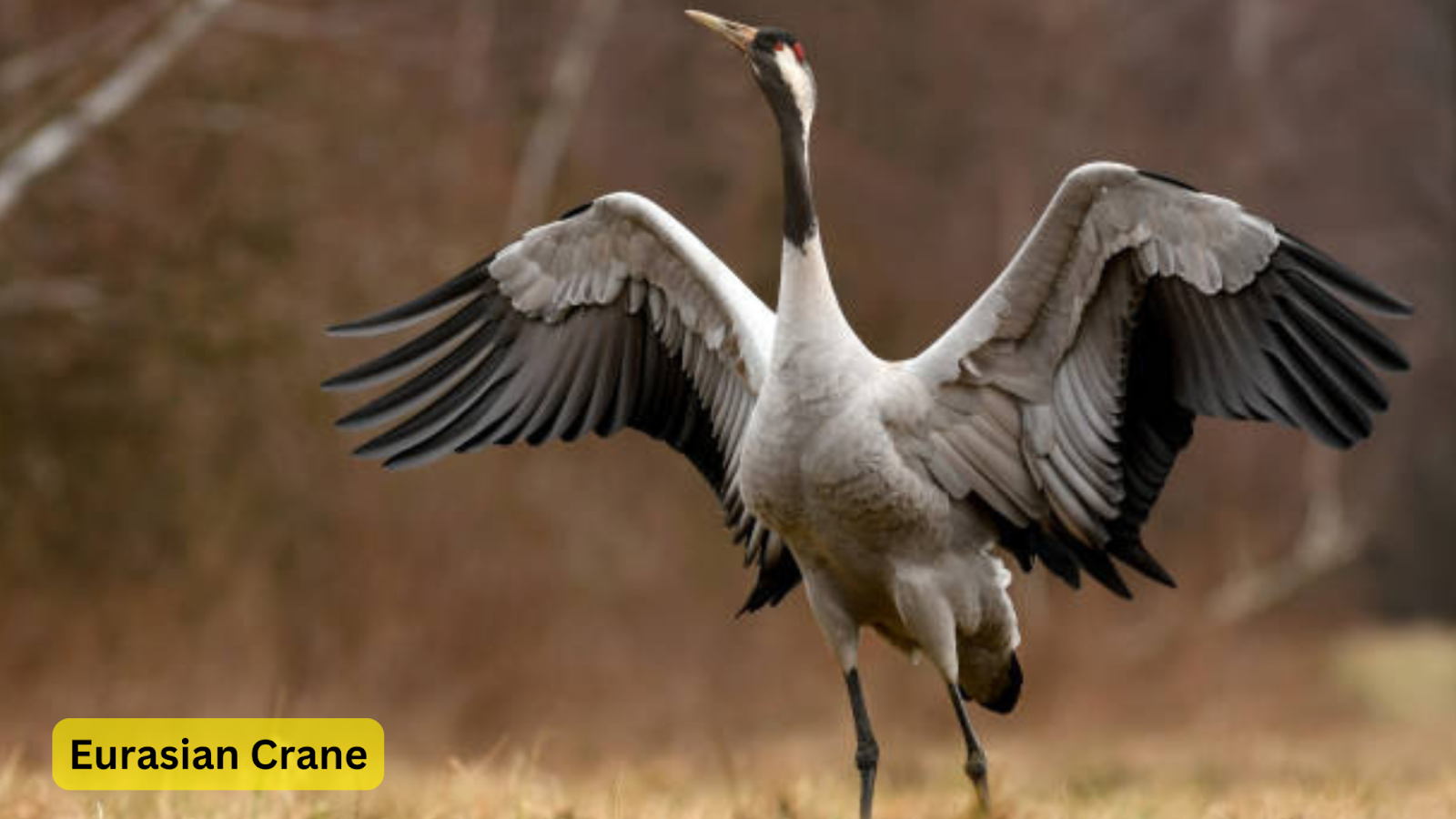
14. Reddish Egret
The Reddish Egret is a medium-sized heron known for its reddish neck and head, and bluish-gray body. It is known for its unique hunting dance, where it runs, jumps, and spins in pursuit of fish.
| Description | Details |
| Scientific Name | Egretta rufescens |
| Length | 68-82 cm (27-32 in) |
| Weight | 400-870 g (14.1-30.7 oz) |
| Region | Americas |
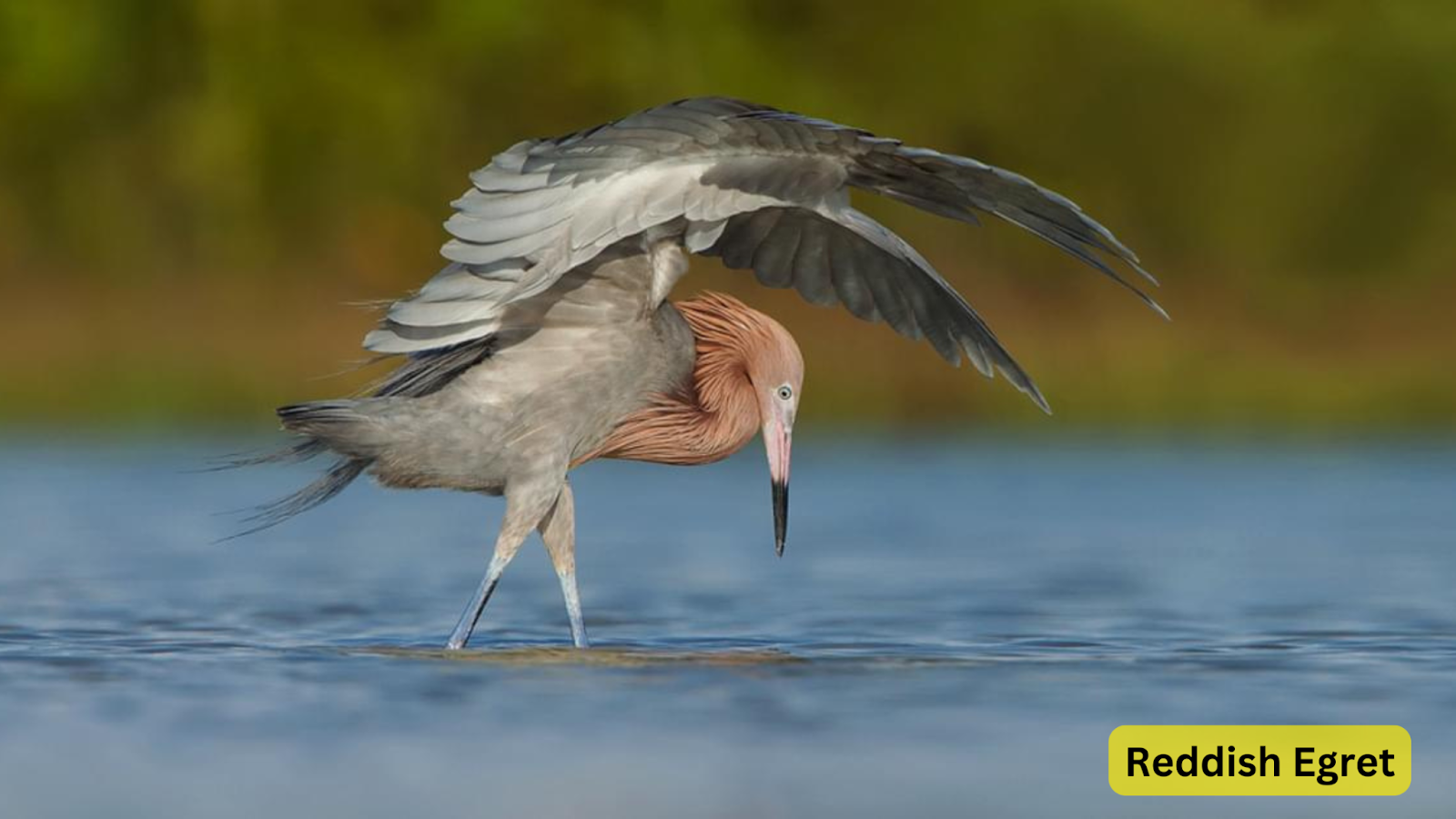
15. Sandhill Crane
The Sandhill Crane is a large bird with a long neck, legs, and pointed beak. It is known for its trumpeting calls and migratory behavior.
| Description | Details |
| Scientific Name | Antigone canadensis |
| Length | 100-120 cm (39-47 in) |
| Weight | 3-5 kg (6.6-11 lbs) |
| Region | North America, parts of Siberia |
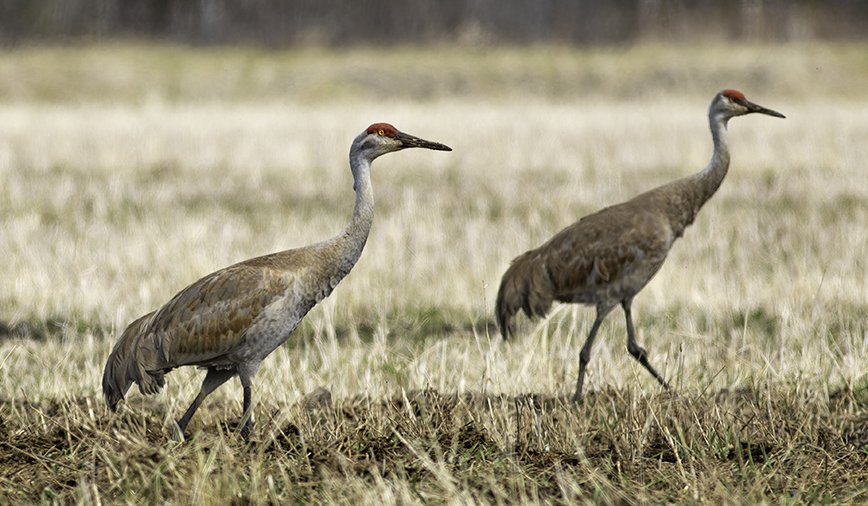
16. Wattled Crane
The Wattled Crane is one of the tallest cranes in Africa, known for the white patch on its crown and the wattles that hang from its throat.
| Description | Details |
| Scientific Name | Bugeranus carunculatus |
| Length | 120-175 cm (47-69 in) |
| Weight | 6.4-7.9 kg (14.1-17.4 lbs) |
| Region | Sub-Saharan Africa |
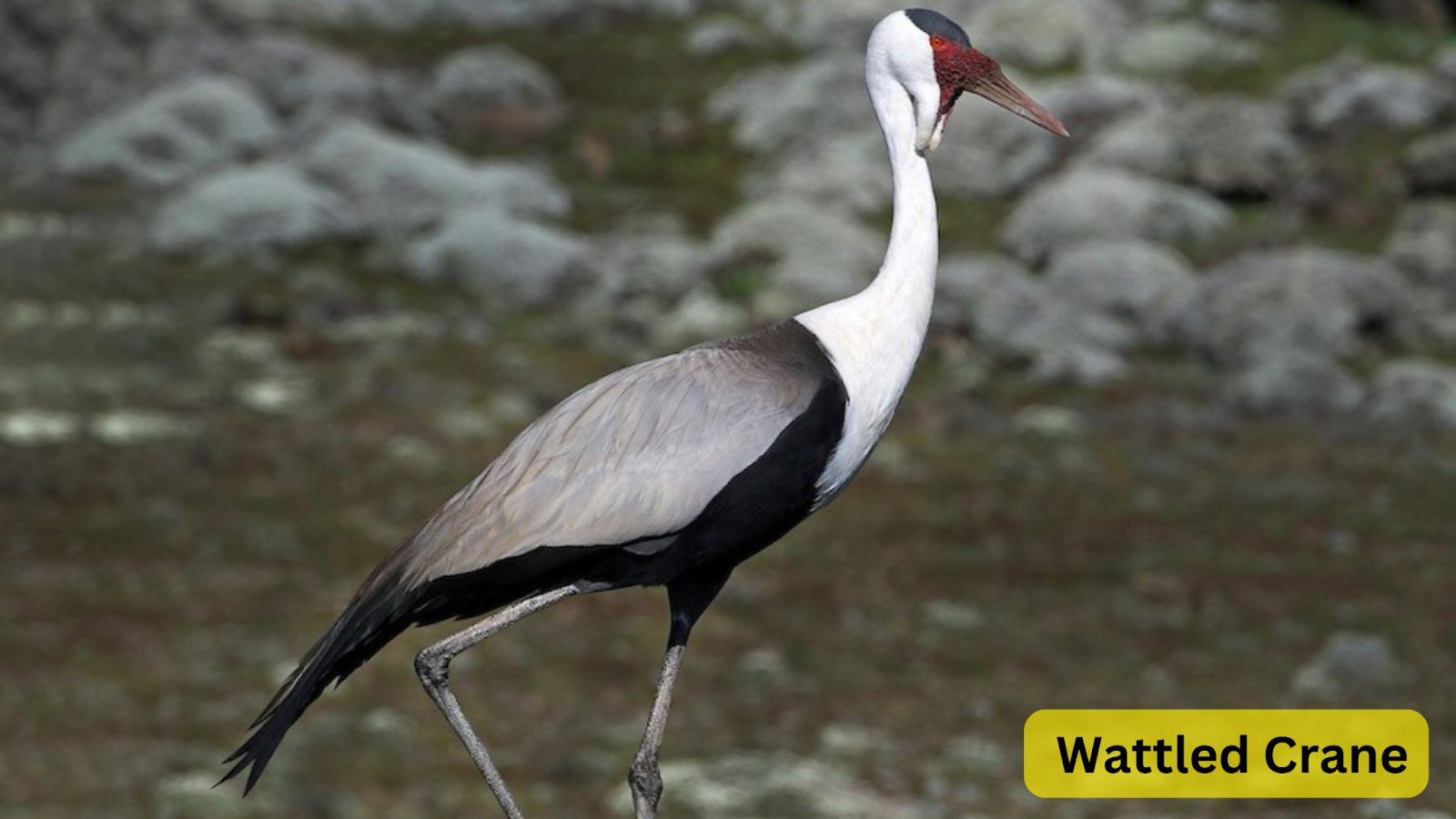
17. African Jacana
The African Jacana is a wader known for its extremely long toes and claws that enable it to walk on floating vegetation in shallow lakes.
| Description | Details |
| Scientific Name | Actophilornis africana |
| Length | 23-31 cm (9-12 in) |
| Weight | 140-260 g (4.9-9.2 oz) |
| Weight | Sub-Saharan Africa |
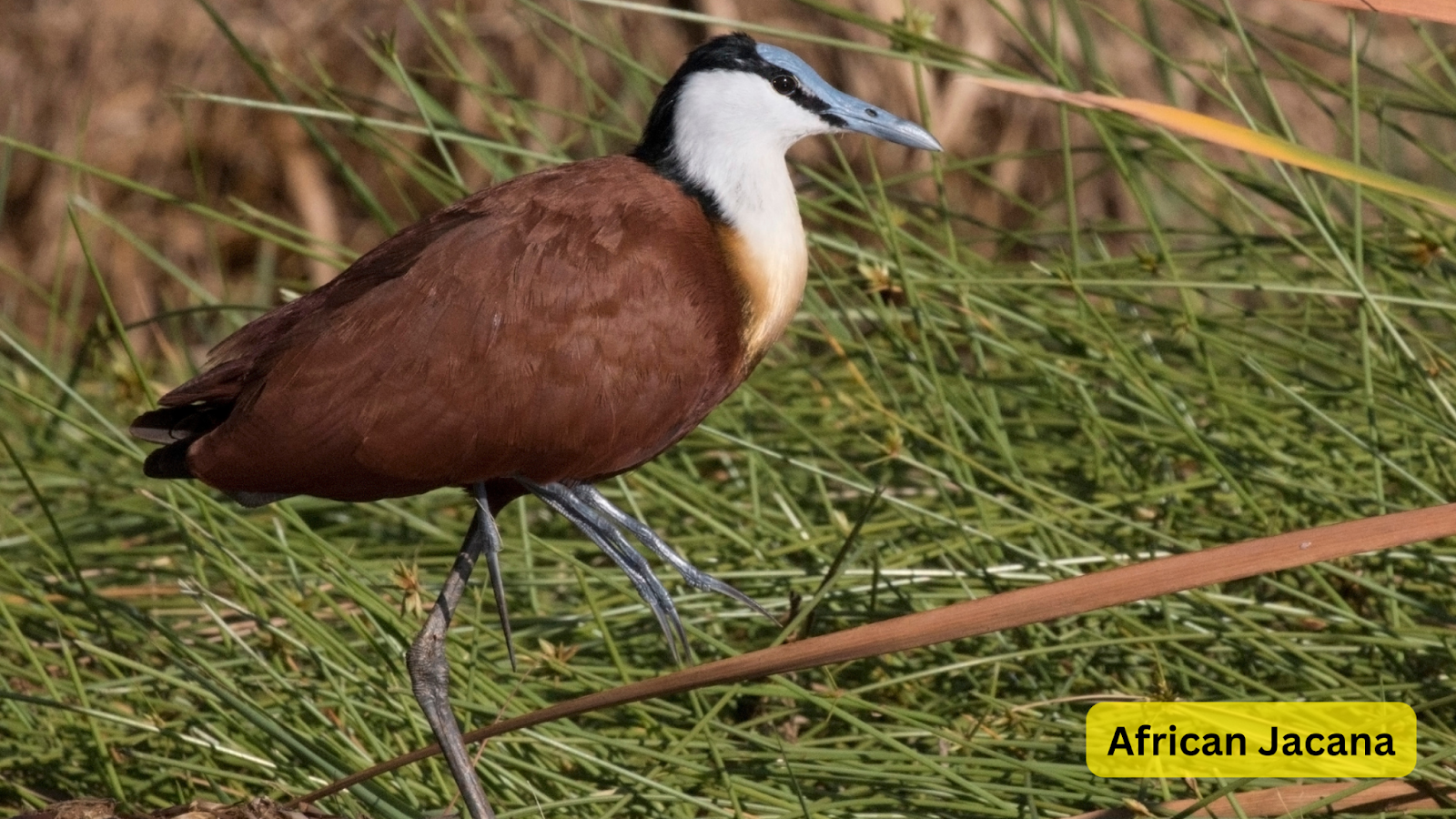
18. Glossy Ibis
The Glossy Ibis is a medium-sized wader with iridescent dark plumage. It is often seen probing for food in shallow water with its long, curved bill.
| Description | Details |
| Scientific Name | Plegadis falcinellus |
| Length | 48-66 cm (19-26 in) |
| Weight | 485-580 g (1.1-1.3 lbs) |
| Region | Worldwide, especially warm regions |
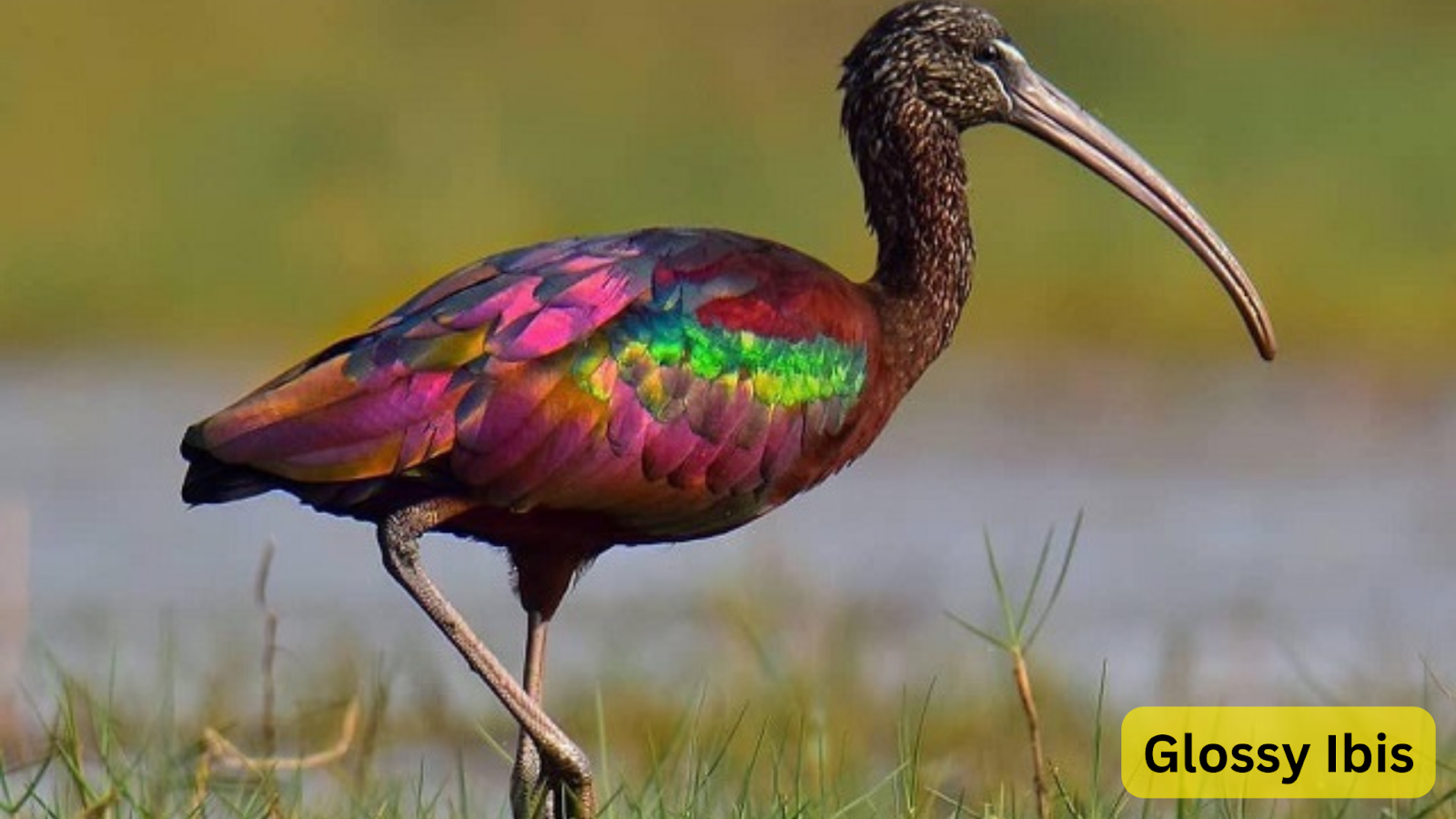
19. Sacred Ibis
The Sacred Ibis is a large bird with white plumage, a black head and neck, and a distinctive down-curved bill. It was venerated in ancient Egypt.
| Description | Details |
| Scientific Name | Threskiornis aethiopicus |
| Length | 68-90 cm (27-35 in) |
| Weight | 1.3-2 kg (2.9-4.4 lbs) |
| Region | Sub-Saharan Africa, Middle East |
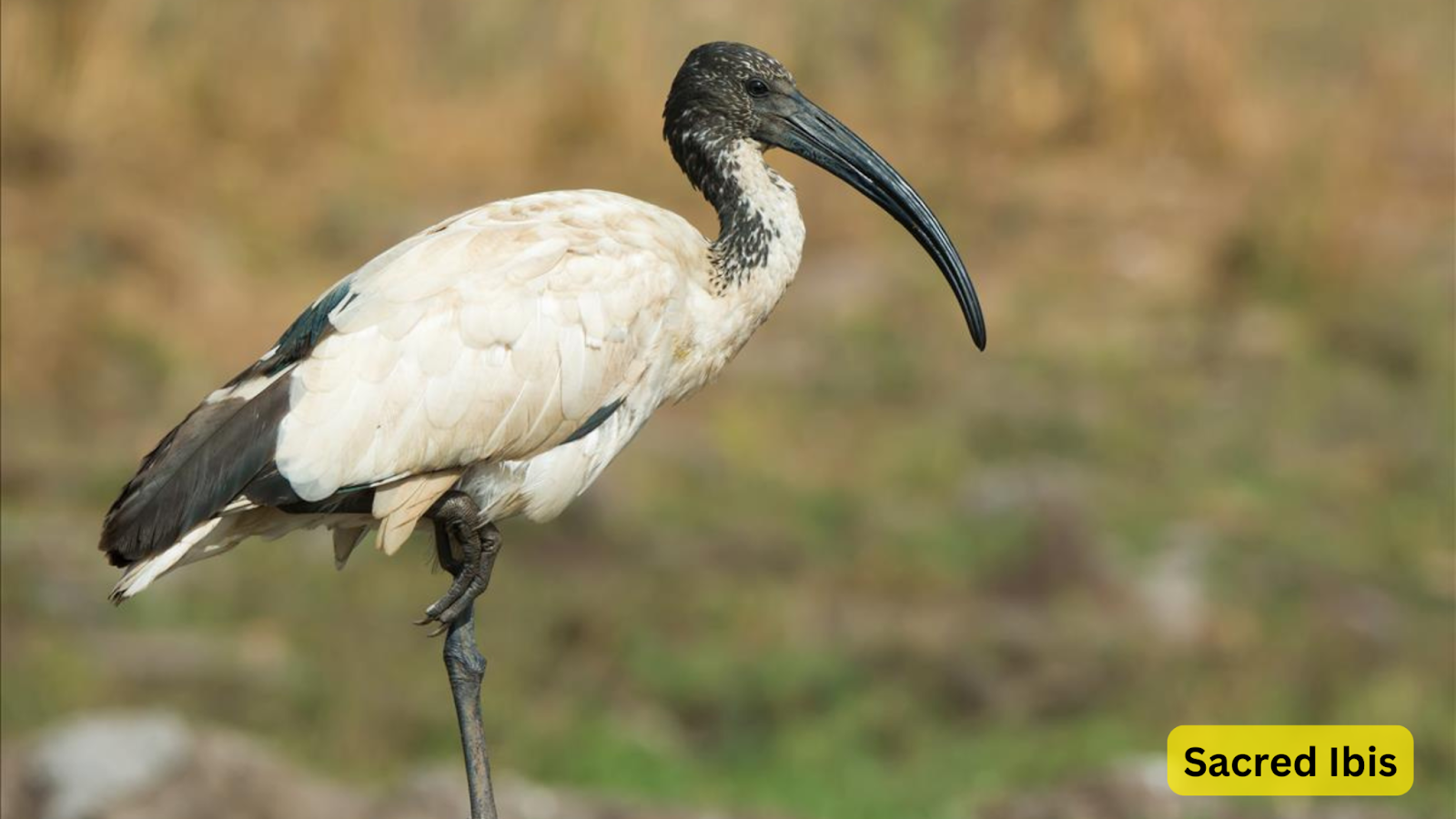
20. Purple Heron
The Purple Heron is a wading bird with a slender, elongated body and long legs. It is slightly smaller and more secretive than the Great Blue Heron.
| Description | Details |
| Scientific Name | Ardea purpurea |
| Length | 78-97 cm (31-38 in) |
| Weight | 78-97 cm (31-38 in) |
| Region | 0.6-1.2 kg (1.3-2.6 lbs) |

21. Wood Stork
The Wood Stork is a large bird with white plumage, black flight feathers, and a distinctive bald head. It is often seen gliding on thermals.
| Description | Details |
| Scientific Name | Mycteria americana |
| Length | 83-115 cm (33-45 in) |
| Weight | 2-3 kg (4.4-6.6 lbs) |
| Region | Americas, mainly in tropical and subtropical regions |
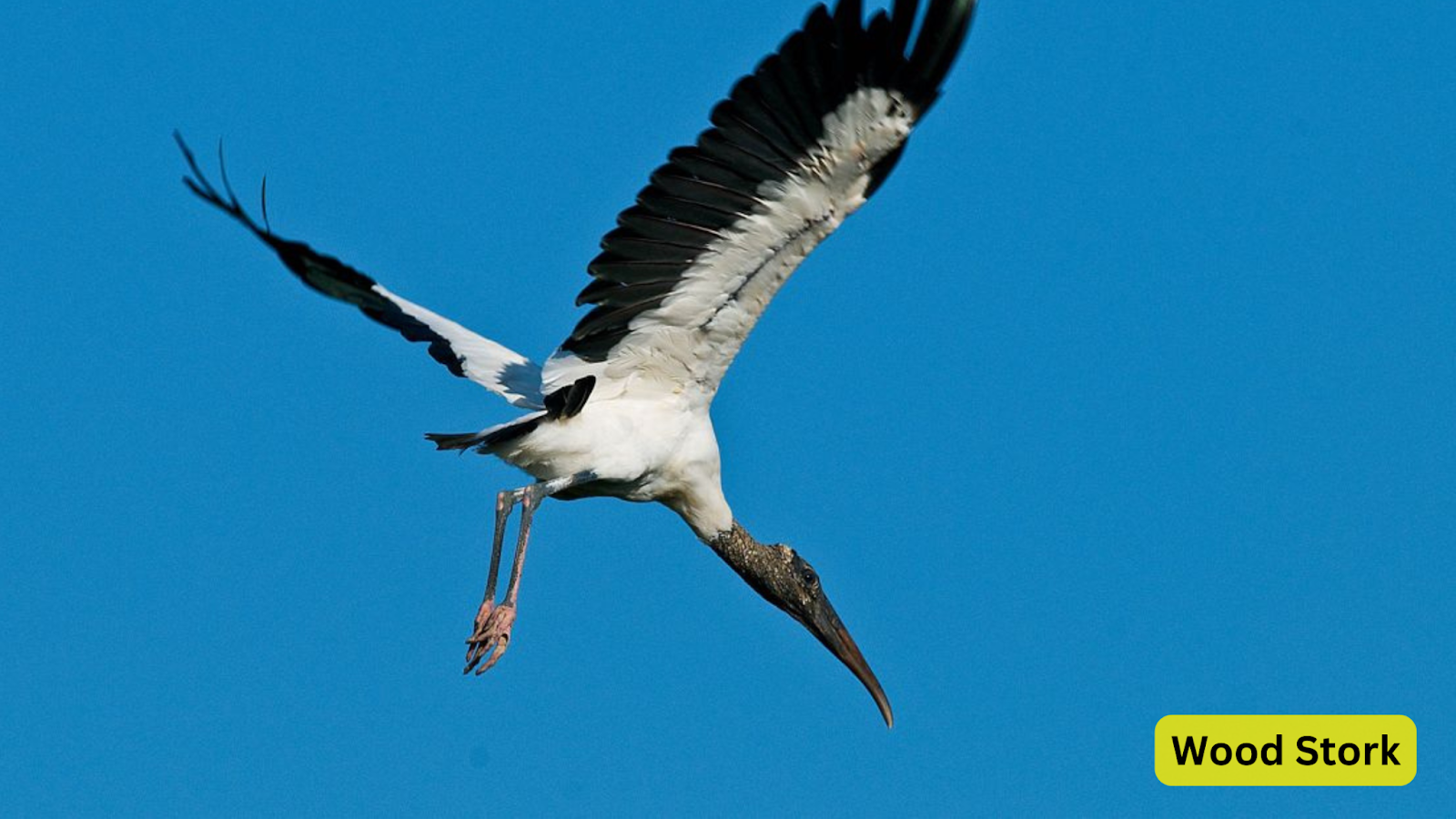
22. Black-winged Stilt
The Black-winged Stilt is a wader with long, thin legs and a distinctive black and white plumage. It is known for its high-pitched calls and fast flight.
| Description | Details |
| Scientific Name | Himantopus himantopus |
| Length | 33-36 cm (13-14 in) |
| Weight | 160-220 g (5.6-7.8 oz) |
| Region | Worldwide, especially in temperate and tropical regions |

23. Grey Heron
The Grey Heron is a tall, long-legged wading bird with grey feathers, black streaks on the head, and a yellow bill. It is commonly found in Europe and Asia.
| Description | Details |
| Scientific Name | Ardea cinerea |
| Length | 84-102 cm (33-40 in) |
| Weight | 1-2 kg (2.2-4.4 lbs) |
| Region | Europe, Asia, Africa |
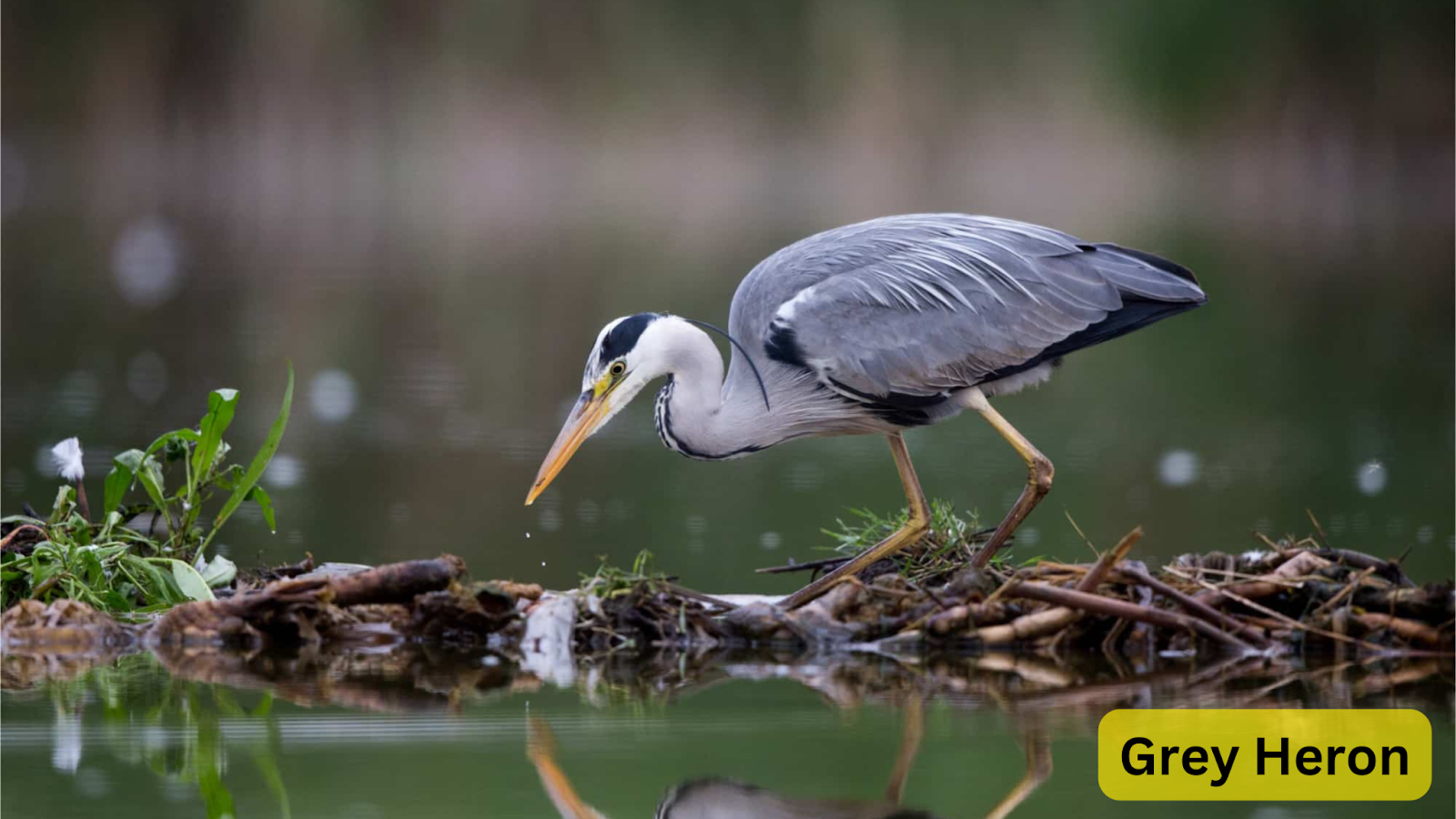
24. Black-faced Spoonbill
The Black-faced Spoonbill is a large wader known for its distinctive spoon-shaped bill and white plumage. It is critically endangered and found in East Asia.
| Description | Details |
| Scientific Name | Platalea minor |
| Length | 73-80 cm (29-31 in) |
| Weight | 1.4-2 kg (3.1-4.4 lbs) |
| Region | East Asia |
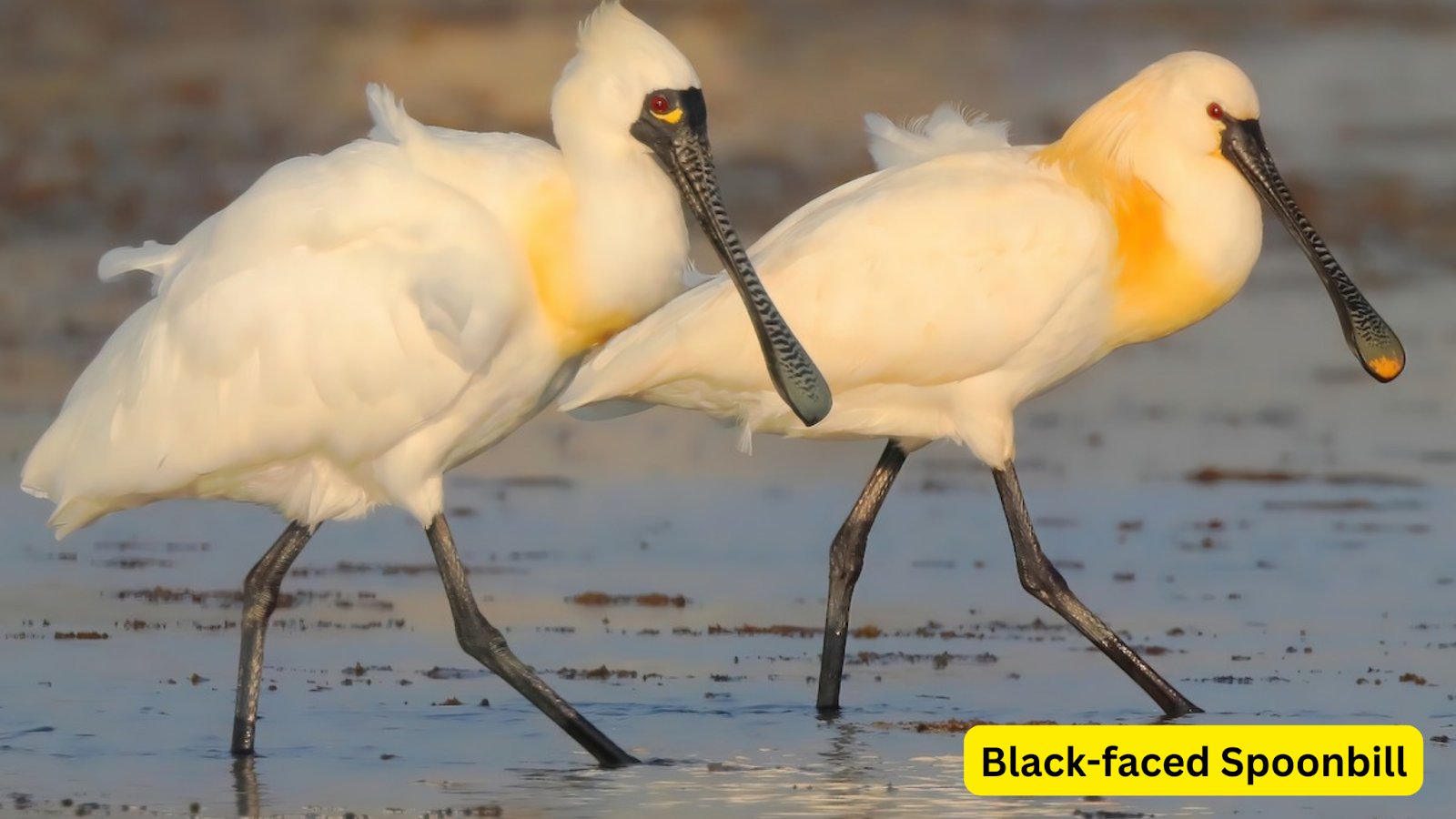
25. Eurasian Bittern
The Eurasian Bittern is a large, thickset heron with a cryptic plumage that helps it blend into reed beds. It is known for its booming call during the breeding season.
| Description | Details |
| Scientific Name | Botaurus stellaris |
| Length | 70-80 cm (28-31 in) |
| Weight | 0.87-1.94 kg (1.9-4.3 lbs) |
| Region | Europe, Asia, North Africa |
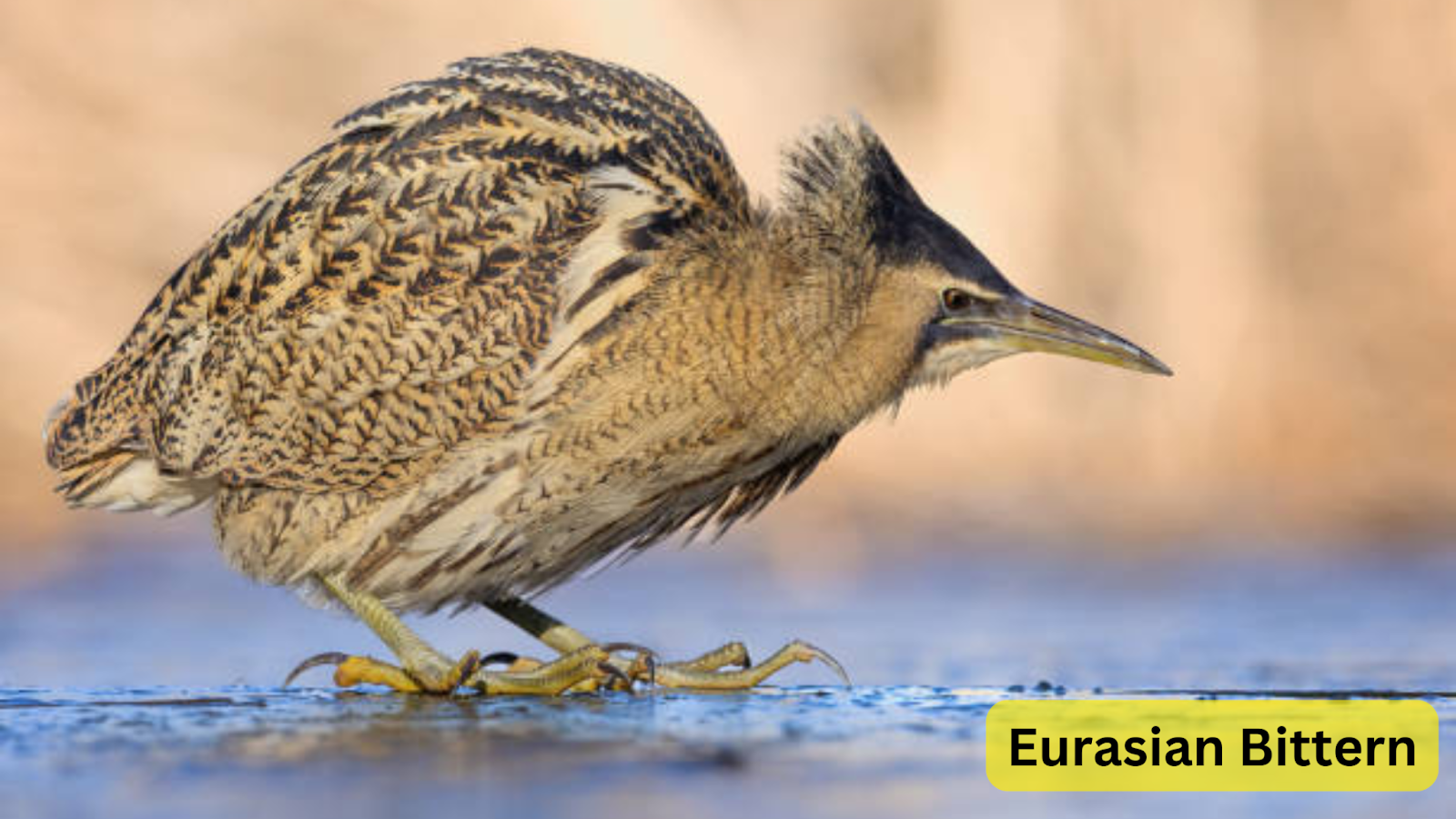
Frequently Asked Questions (FAQs)
Q1. What are some common long-legged birds?
Some common long-legged birds include flamingos, herons (such as the Great Blue Heron and Snowy Egret), cranes (like the Whooping Crane), storks (including the Wood Stork), and ibises.
Q2. Why do these birds have long legs?
Long legs help these birds wade through water, hunt efficiently, avoid predators, regulate body temperature, and navigate through varied terrains.
Q3. Where can you typically find these birds?
Long-legged birds are commonly found in wetlands, marshes, coastal areas, and shallow lakes. They inhabit regions across the globe, from the Americas to Africa, Asia, and Europe.
Q4. What do long-legged birds eat?
Their diet primarily consists of fish, insects, small vertebrates, and crustaceans. Some species, like flamingos, also consume algae and other small organisms filtered from the water.
Q5. How can we help in the conservation of these birds?
Supporting habitat preservation efforts, reducing pollution, participating in conservation programs, and spreading awareness about the threats these birds face can all contribute to their conservation.
Wrapping Up
Long-legged birds are a remarkable and diverse group of species with unique adaptations that allow them to thrive in various environments. From the striking pink of flamingos to the graceful hunting techniques of herons, these birds play a crucial role in their ecosystems. Their long legs provide numerous advantages, including efficient hunting, predator avoidance, and thermoregulation. By learning more about long-legged birds and participating in conservation efforts, we can help ensure these magnificent creatures continue to grace our planet for generations to come.


